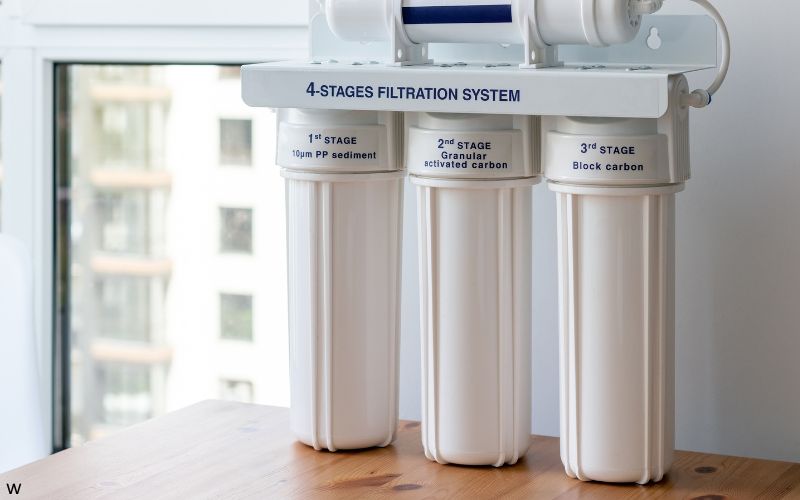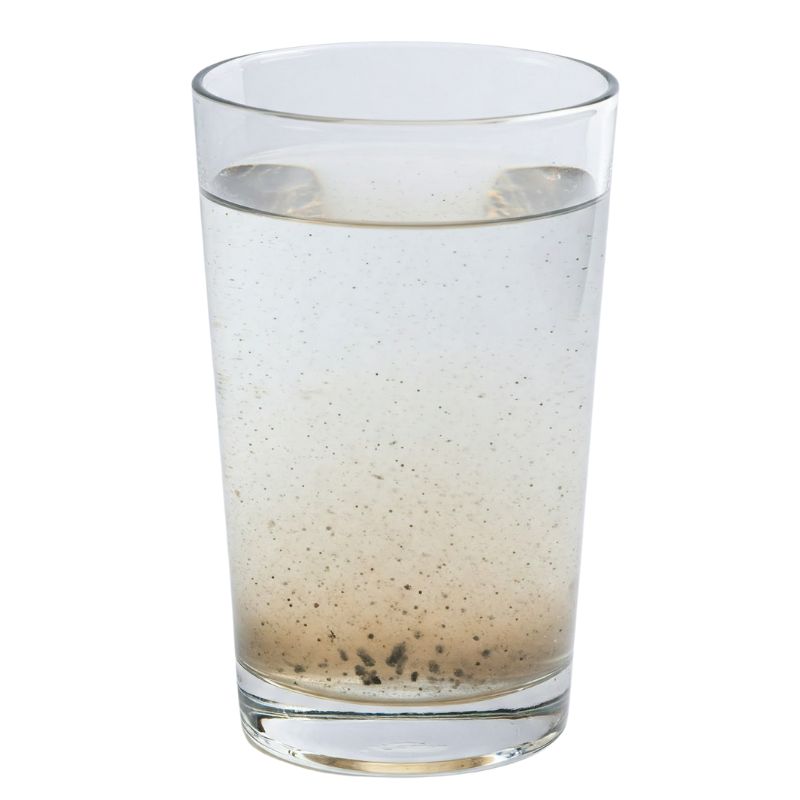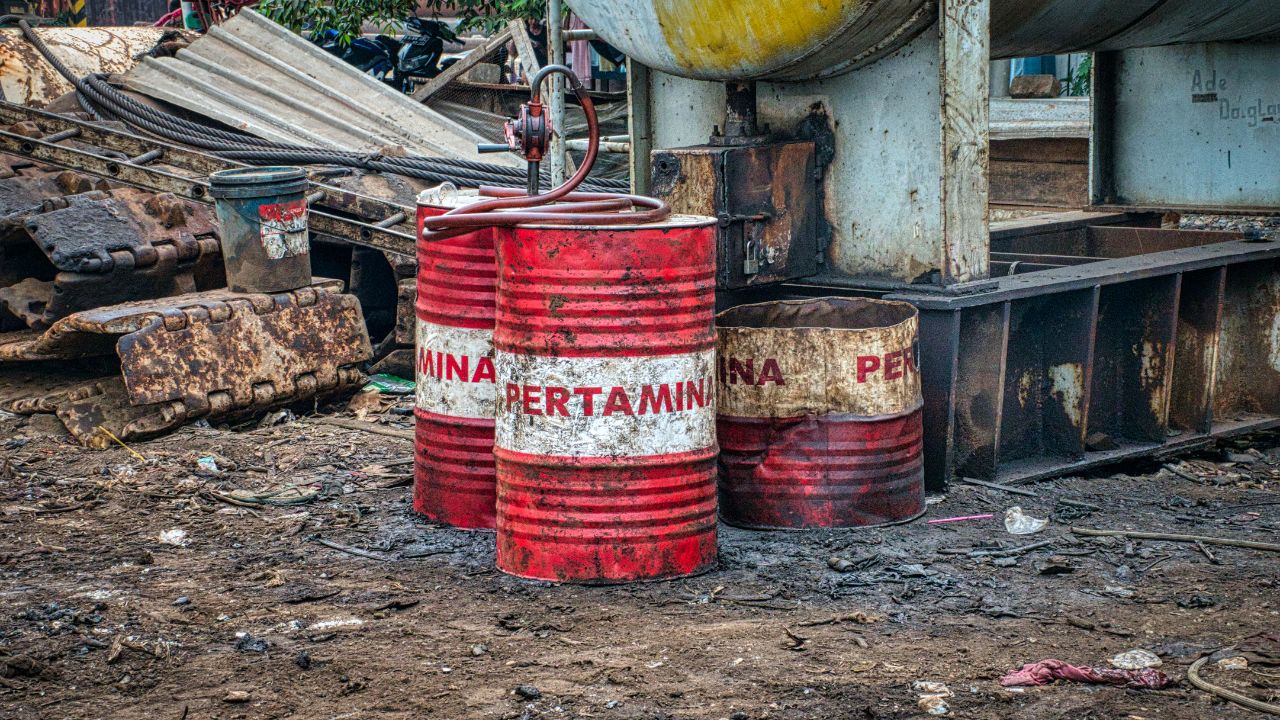Madison Water Quality at a Glance
moderate concerns
Is Madison Water Safe to Drink?
Generally Yes, With Some Concerns – Madison Water Utility meets all federal and state standards, but chromium-6 levels are 33 times above health guidelines at 0.657 ppb. PFAS detected in half of Madison’s wells, with Well 15 closed since 2019 for treatment. Disinfection byproducts from chlorination also exceed health guidelines, though the water system draws from deep sandstone aquifers 500-1100 feet underground.
⚠️ Key Concerns for Madison Residents
- Chromium-6: 0.657 ppb detected (33x above EWG health guideline); found in 14 of 22 wells at under 2 ppb
- PFAS “Forever Chemicals”: PFHxS at 2.25 ppt, PFOA at 0.426 ppt; detected in 10 of 20 active wells
- Disinfection Byproducts: Trihalomethanes at 35x health guidelines, haloacetic acids at 39x guidelines from chlorination
- Radium & Radon: Radium at 29x health guidelines (1.46 pCi/L), radon at 149x guidelines (223 pCi/L)
Read the full report below for detailed analysis, well-specific data, and actionable recommendations for Madison residents.
Madison – Wisconsin – Water Quality Report 2025: PFAS Testing, Infrastructure Concerns & Safety across your city
Madison Water Utility is a public water system owned and operated by the City of Madison, serving over 250,000 residents across Madison and surrounding areas. The utility manages an extensive infrastructure consisting of 20 active wells, 33 reservoirs (including seven elevated water towers), and over 900 miles of interconnected water transmission and distribution mains. Funded by water rates rather than taxes, the utility operates under the governance of the Water Utility Board and the Madison Common Council.
Madison draws its drinking water exclusively from a deep sandstone aquifer beneath the city, which is naturally replenished by rain and snowmelt filtering through soil and rock. The city’s wells reach 500-1,100 feet deep into this aquifer, collectively pumping approximately 10 billion gallons of water annually. This groundwater source naturally contains minerals such as iron and manganese, which, while not health concerns, can affect water color and taste. To address these aesthetic issues and emerging contaminant concerns, the utility has been systematically upgrading infrastructure, adding filtration systems at key wells, and conducting regular monitoring to ensure water quality exceeds regulatory standards.

Madison Water Quality: Current Status (2024-2025)
Latest Testing Results
- PFAS Status: PFAS have been detected at low levels in half of Madison’s wells, with all active wells complying with both Wisconsin’s current standard (70 parts per trillion) and the stricter federal guidelines. Madison’s highest detected levels include PFHxS at 2.25 ppt and PFOA at 0.426 ppt.
- Well 15 Treatment: Well 15 on Madison’s east side has been offline since 2019 due to PFAS concerns. A treatment facility using granular activated carbon and ion exchange technology is under construction, with completion expected in 2025.
- Chromium-6 Levels: Chromium-6 has been detected at 0.657 parts per billion in Madison’s water system, which is 33 times above EWG’s health guideline of 0.02 ppb. It has been found in 14 of Madison’s 22 wells at levels less than 2 parts per billion.
Aquifer Water Source
- Deep Sandstone Aquifer: Madison’s water comes from a natural underground reservoir consisting of saturated sandstone hundreds of feet below the city, naturally filtered through layers of soil and rock.
- Well Depths: The city’s municipal wells reach 500-1,100 feet deep into the aquifer, drawing from specific zones to maintain water quality and supply reliability.
- Natural Minerals: The sandstone aquifer naturally contains iron and manganese, which, while not health concerns, can affect water aesthetics and require special treatment at several well facilities.
Treatment Approaches
- Targeted Filtration: Madison is systematically adding iron and manganese filtration systems to wells with elevated levels of these minerals, improving water taste, odor, and appearance.
- Chlorine Disinfection: Small amounts of chlorine are added to destroy harmful waterborne viruses, bacteria, and microbes, ensuring microbiological safety. However, this process creates disinfection byproducts including trihalomethanes at levels 35 times above health guidelines.
- Fluoridation: Madison has added fluoride to its water since 1948 at the direction of the Common Council to reduce the risk of dental cavities, following recommendations from Public Health Madison Dane County.
Infrastructure Upgrades
- Aging Infrastructure: Madison is undertaking a 30-year plan to replace approximately 300 miles of aging water mains with modern cement-lined ductile iron pipe wrapped with protective plastic sheeting.
- Well Facility Modernization: Several well facilities are being upgraded or rebuilt to address aging infrastructure, improve reliability, and add filtration capabilities.
- Advanced Treatment: Specialized treatment systems for specific contaminants are being added where needed, such as the PFAS treatment system at Well 15.
Water Quality Monitoring
Madison Water Utility takes water quality extremely seriously, routinely collecting more samples and conducting more tests than required by the EPA and Wisconsin DNR. The utility performs thousands of tests annually to monitor for regulated contaminants and emerging concerns. Regular testing for PFAS is conducted at all wells, with results published transparently on the utility’s website and in annual Water Quality Reports. The city also conducts main flushing operations in spring and summer to remove naturally occurring iron and manganese sediment from the distribution system. This proactive approach to water quality management, combined with strategic infrastructure investments, ensures that Madison’s drinking water consistently meets or exceeds all federal and state safety standards, though some contaminants like chromium-6 and disinfection byproducts exceed health-based guidelines set by environmental organizations.
Recommendations for Madison Residents

Check Your Water Source
Visit the Madison Water Utility website (cityofmadison.com/water) and enter your address to find out which well serves your home. This information can help you understand specific water quality characteristics in your neighborhood and stay informed about any maintenance or upgrades.

Consider Home Filtration
Given the presence of chromium-6 at levels 33 times above health guidelines and elevated disinfection byproducts, consider a NSF-certified filter designed for your needs. For PFAS and chromium-6 reduction, reverse osmosis systems are most effective. For disinfection byproducts, activated carbon filters can help reduce levels.

Address Discolored Water
If your water becomes discolored (usually from iron and manganese sediment), run a cold water tap at full force from the lowest level of your home (like a basement sink) until the water clears, typically within 15 minutes. If it doesn’t clear, call Madison Water Utility at (608) 266-4661.

Stay Informed
Review Madison Water Utility’s Annual Drinking Water Quality Report, which provides comprehensive testing results and explains water treatment processes. Follow the utility on social media and sign up for email updates about water quality issues, main flushing schedules, and infrastructure projects.

Report Water Concerns
Contact Madison Water Utility’s Water Quality Department at (608) 266-4654 with questions or concerns about your water quality. For water main breaks, service emergencies, or other urgent issues, call the utility’s 24-hour dispatch line at (608) 266-4661.
Quality News About Your Water
Get the comprehensive water quality news coverage you need with our dedicated US Water News Service. From coast to coast, we deliver in-depth reporting and expert analysis on PFAS contamination, EPA regulatory changes, infrastructure developments, and emerging water safety issues affecting communities nationwide. While mainstream media only covers the biggest stories, we provide the detailed, ongoing coverage that helps you understand the full scope of America’s water challenges. Whether you’re a concerned citizen, water professional, or community leader, our daily updates and analytical insights keep you informed about the issues that matter most to public health and environmental safety.
Frequently Asked Questions
Is Madison’s tap water safe to drink?
Yes, Madison’s tap water meets all federal and state drinking water standards and is considered safe to drink. The Water Utility conducts thousands of tests annually, more than required by regulatory agencies, to ensure water quality.
However, while meeting federal standards, some contaminants like chromium-6 (33 times above health guidelines) and disinfection byproducts (35 times above health guidelines) exceed levels recommended by environmental health organizations. PFAS levels are low and compliant with current regulations, though all active wells testing below both Wisconsin and federal standards. The utility implements comprehensive monitoring and is proactive in addressing emerging contaminants.
What is being done about PFAS in Madison’s water?
Madison Water Utility has taken a comprehensive approach to addressing PFAS concerns:
1. Regular Testing: All wells are tested for PFAS compounds, with results published transparently on the utility’s website
2. Well 15 Treatment: Well 15, which had elevated PFAS levels, was taken offline in 2019 and will remain so until construction of a treatment facility is completed in 2025
3. Advanced Technology: The Well 15 treatment facility will use a hybrid approach combining granular activated carbon and ion exchange resin to remove PFAS to non-detectable levels
4. Federal Compliance: The project positions Madison ahead of EPA regulatory requirements that will take effect in 2027
Madison’s proactive approach has ensured all active wells remain compliant with current standards while preparing for future regulations.
Why does my water sometimes look discolored?
Discolored water in Madison is primarily caused by naturally occurring iron and manganese sediment from the sandstone aquifer. Several factors can stir up this sediment:
• Main flushing: The utility regularly flushes water mains in spring and summer to remove accumulated sediment
• Pressure changes: Water main breaks, repairs, or nearby construction can cause pressure changes that disturb sediment
• Fire hydrant use: Fire suppression activities or hydrant testing can stir up sediment
• Changes in flow direction: Adjustments to the distribution system can change water flow patterns
While discolored water is not harmful, it can be unappealing and may stain laundry. The Water Utility is addressing this issue by installing iron and manganese filtration at selected wells, and residents can clear discolored water by running a cold water tap at full force until the water clears.
How is Madison addressing its aging water infrastructure?
Madison is undertaking a comprehensive approach to upgrading its water infrastructure:
Pipeline Replacement:
• The utility is implementing a 30-year plan to replace approximately 300 miles of aging water mains
• Modern cement-lined ductile iron pipe wrapped with protective plastic sheeting is being installed, with an expected lifespan of 100+ years
• Where feasible, trenchless technologies are used to create new pipes within existing ones
Well Facility Modernization:
• Several well facilities are being rebuilt with enhanced treatment capabilities
• Increased reservoir capacity for better fire protection and emergency supply
• Addition of filtration systems to improve water quality and address specific contaminants
These investments are critical to maintaining system reliability and water quality for generations to come.
Contaminants of Concern

PFAS (Per- and Polyfluoroalkyl Substances)
Source: Industrial processes, firefighting foam, food packaging, and consumer products; detected at low levels in approximately half of Madison’s wells, with potential contamination from nearby Truax Air Field
Health Effects: Potential impacts on the immune system, hormone levels, cholesterol levels, liver function, and certain cancers with long-term exposure
Current Status: All active wells meet Wisconsin and federal standards; highest detected levels include PFHxS at 2.25 ppt and PFOA at 0.426 ppt; Well 15 remains offline while treatment system is constructed

Chromium-6 and Disinfection Byproducts
Source: Chromium-6 from industrial pollution and natural mineral deposits; disinfection byproducts form when chlorine reacts with organic matter during water treatment
Health Effects: Chromium-6 is a known carcinogen; disinfection byproducts increase cancer risk and may cause reproductive issues
Current Status: Chromium-6 at 0.657 ppb (33x above health guidelines); trihalomethanes at 35x health guidelines; haloacetic acids at 39x health guidelines

Iron and Manganese
Source: Naturally occurring minerals in the sandstone aquifer beneath Madison; concentrations may increase with well pumping and can be influenced by nearby landfill activities
Health Effects: Not considered health concerns by EPA; regulated as secondary contaminants for aesthetic reasons (taste, odor, color, and potential laundry staining)
Current Status: Several wells have iron and manganese levels approaching EPA secondary standards; filtration systems being added at key wells to improve water aesthetics and reduce discoloration issues

Radioactive Contaminants
Source: Naturally occurring radioactive elements in groundwater and soil; radium from rock formations and radon gas from uranium decay in groundwater
Health Effects: Radium causes bone cancer and other cancers; radon causes lung cancer when it volatilizes from water during showering and household use
Current Status: Combined radium at 1.46 pCi/L (29x above health guidelines); radon at 223 pCi/L (149x above health guidelines); levels comply with federal regulations but exceed health-based recommendations
Please read – our information
The information presented on cleanairandwater.net is compiled from official water quality reports, trusted news sources, government websites, and public health resources. While we strive for accuracy and thoroughness in our presentations, we are not scientists, engineers, or qualified water quality professionals.
Our mission is to present water quality information in an accessible, real-world format that helps people understand what’s in their water and make informed decisions about their health and safety. We believe that complex environmental information should be available to everyone in a format that’s easy to understand.
We make every effort to ensure our content is current and accurate, but we cannot guarantee that all information is complete or error-free. This website should not replace official communications from your local water utility or health department. We always recommend consulting official sources for the most up-to-date information regarding your specific water system.
Clean Air and Water is not liable for any unintentional errors, omissions, or outdated information. The content on this site is provided for informational purposes only and should not be considered professional advice.


